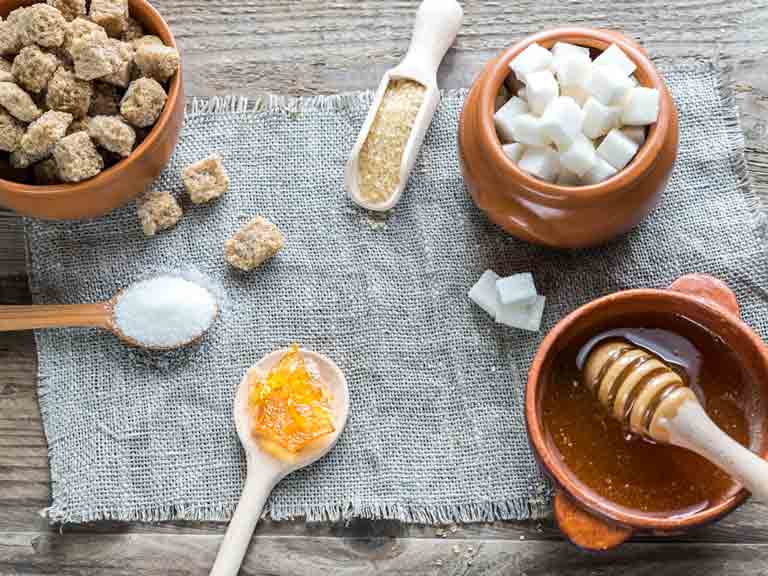The sugar content of honey

Contents
The sugar content of honey

When combined, honey’s sugar content and moisture content are virtually exactly equal, or approximately 100%. Since honey contains 18% water, it also contains 82% sugars, primarily glucose (dextrose) and fructose, which are simple sugars (laevulose). Depending on the honey’s botanical source, these percentages will vary: All varieties of honey eventually change from liquid to solid when the glucose crystallizes. The honey will crystallize more quickly and become quite hard as fine and rough crystals form as the glucose concentration rises. The honey is stirred until it turns creamy and a paste, not a firm block, forms.
Addition of sugars
By adding refined sugars like maltose and saccharase or fruit syrup, honey can be altered. Titration can be used in a straightforward laboratory to determine the glucose content. However, implementing this strategy in the real world is challenging. Using straightforward techniques to assess the rotation of the polarization plane of light passing through the honey, direct screening for glucose and fructose is also achievable.
Enzymes in honey
The enzymes diastase, invertase, and glucose-oxidase are found in honey. When heated, these enzymes get denaturated and suffer damage. Only sometimes are the invertase and glucose-oxydase standards used.
Diastase-index
Starch is converted to maltose by the diastase enzyme, also known as amylase. The freshness and rawness of honey are determined by the diastase index. This enzyme will still be sufficiently intact to meet the requirements if honey is cooked for 24 hours at 50°C.
HMF content
One of the most crucial standards for honey quality, along with moisture content, is HMF content. When honey is heated or warmed for a long time, one of the sugars in it reacts to create hydroxymethylfurfural, also known as HMF. Additionally, heated cane sugar and inverted sugar syrups contain significant levels of HMF. Therefore, the presence of HMF may also be a sign of sugar manipulation or mixing. Although the material is hazardous to bees, it is not to humans.
The norm
The HMF level of honey may not be greater than 40 mg/kg, according to the EU and Codex Alimentarius. The HMF concentration of newly centrifuged and comb honey is less than 5 mg/kg. At a temperature of 20°C, storing honey causes the HMF level to rise by 1-2 mg/kg per month. The maximum value of 40 mg/kg has often been attained after two years. It will likely be attained even more quickly in tropical settings. Therefore, as long as it is labeled as tropical honey, honey from tropical regions is permitted by law to have a maximum HMF value of 80 mg/kg. Peroxide test indirect measurement In a small laboratory, detecting diastase and HMF is challenging.
Microscopic analysis

A small proportion of the flower’s own pollen is found in the nectar. This enables the nectar in honey to be traced back to its source. Their pollen also serves as a representation of the flora the bees travelled through and collected pollen loads from. The family, genus, and species of each plant can thus be determined by microscopic examinations. Although too much pollen in honey is bad, filtration is not permitted. Pollen from plants’ stamens, pollen loads carried on bees’ legs, bee bread out of the comb, and honey extracted from the comb or after can all be prepared on microscope slides.
Colour, smell, and taste of honey

The viscosity, flavor, and color of honey are referred to as its organoleptic or sensory qualities. Honey’s flavor and aroma are mostly influenced by the flowers and plants from which it is created. However, comb alterations, particularly in combs that originally contained brood if honey is stored in them for a long time, can affect these properties.







